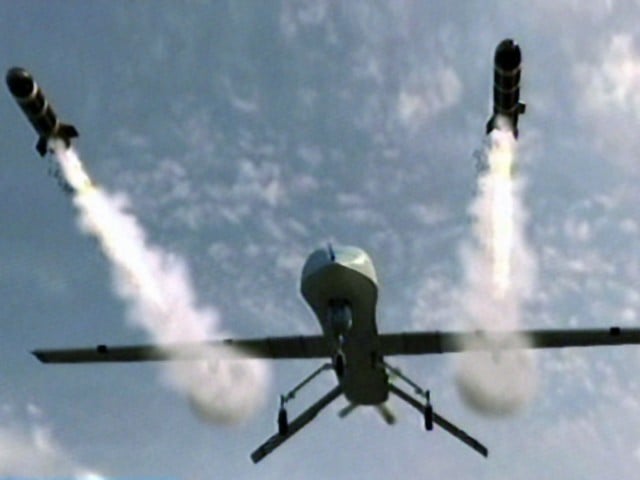Major cities may still only take up a small portion of the landmass in the United States, but they are nevertheless home to over 80% of the population. That means a lot of people will be caught in the concrete jungle when disaster strikes.
The survival skills necessary to survive a crowded city during a disaster, whether it’s a major disaster such as a foreign attack or a personal disaster such as a robbery, are different from the skills many preppers are accustomed to.
If you would like to ensure that you can take whatever the concrete jungle has to throw at you, here are ten skills you need to have.
Want to save this post for later? Click Here to Pin It On Pinterest!
1. Lockpicking
The trademark of big cities is lots of buildings, and lots of buildings means lots of locks. In normal circumstances, these locks may be an afterthought. However, in a disaster scenario, being able to get past them could mean the difference between life and death.
Now, let’s be clear: this isn’t about breaking and entering or stealing from people. It’s about survival. Imagine rioters are heading your way and the only safe place is an abandoned building. Or maybe you’re with a loved one who desperately needs medication and the only pharmacy nearby is shut tight. In a true life-or-death emergency, being able to unlock a door could safe your life.
That’s why it’s worth brushing up on your lockpicking skills and investing in a good, portable lockpicking kit. Like any other survival skill, it’s better to have it and not need it than the other way around. In the right situation, these tools and skills could prove incredibly valuable. To learn more, check out these 3 ways to open locked doors.
2. Blending In
How do you hide in a place where there are thousands, if not millions, of eyes everywhere you turn? The answer is that you hide in plain sight. The art of blending in is one that’s really underappreciated, but in an urban area it can be the best way to ensure you’re not the target of whatever catastrophe is taking place.
This is where the concept of the gray man comes in. A gray man is someone who moves through a crowd without drawing attention. They don’t look threatening, but they also don’t look like an easy mark. They wear neutral clothing, avoid flashy gear, and carry themselves in a calm, normal way, even when chaos is breaking out around them. The idea is to be forgettable.
In practical terms, this means no camo, no tactical backpacks, and no behavior that makes people stop and look twice. Blend in with whatever the locals are wearing, keep your head down, and don’t get caught rubbernecking at the action around you. If everyone else is panicking, resist the urge to join in. The less memorable you are, the safer you’ll be.
Martial law officials, foreign invaders, and scavengers are unlikely to target someone who doesn’t stand out. In many cases, survival in the city comes down to being just another indistinguishable face in the crowd.
Here’s our guide to becoming a gray man during a crisis.
3. Self-Defense
If you don’t intend to carry a weapon on you during your visit to the city, it’s a great idea to have a few self-defense skills that you can rely on. Of course, in the vein of blending in, physical confrontations should be avoided if at all possible. The best fight is the one you never have to take part in.
But if you do have to defend yourself, you need to make sure you have what it takes to come out on top. A few basic martial arts techniques, like how to break free from a wrist grab or how to throw a simple palm strike, can be surprisingly effective in giving you a chance to escape. Even learning how to use your voice, yelling loudly and firmly, can startle an attacker and draw attention, which might be enough to deter them.
When it comes to weapons, think beyond firearms. A sturdy tactical flashlight, a metal pen, or even your belt can all be used as improvised weapons. Pepper spray (where legal) is also a strong option, especially in tight urban spaces where you don’t want to risk getting into a wrestling match with someone bigger or stronger than you.
The goal isn’t to fight like an action hero, it’s to survive. A few simple self-defense skills and tools could buy you the precious seconds you need to get away from danger and disappear back into the crowd.
4. Scavenging
One great thing about urban areas is that there’s no shortage of materials and supplies available, if you know where to look. Scavenging is more of a mindset than a formal skill. You need to keep your eyes open and develop a little creativity for repurposing what you find into something useful.
Think about what you might need most in an emergency: food, water, medical supplies, tools, or materials for shelter. These can sometimes be found in places most people overlook, like the break room of an abandoned office building (snacks, water bottles), a construction site (tarps, lumber, tools), or even a laundromat (detergent, containers, clean water in machines).
It’s smart to do some scouting ahead of time. Pay attention to locations that could be potential sources of supplies, make sure there aren’t already people there, and think through how you might get in and out safely. Observation is half the battle when it comes to scavenging effectively.
Of course, there’s an ethical side to this too. Scavenging should only be done in places that appear to be permanently abandoned, where the items inside are no longer being used or claimed. Taking from someone who may come back for their supplies is unethical and could lead to unnecessary conflict.
In a survival situation, scavenging isn’t about looting for valuables. It’s about finding overlooked resources that can keep you alive when the normal supply chains are broken. Here’s our guide to scavenging after the SHTF.
5. Situational Awareness
When you’re surrounded by people, there’s a lot to take in and process. This is especially true in hectic situations after a disaster. Developing sharp situational awareness, the ability to quickly notice what’s happening around you, is one of the best ways to stay safe in an urban area.
This means keeping your head up, scanning your surroundings, and noticing the small details that others overlook. Is that group of people ahead of you just talking, or are they watching and waiting for an easy target? Is that alleyway a shortcut to safety, or a dead end you could get trapped in? Paying attention to your gut instinct is just as important as what your eyes and ears pick up.
For example, if you notice the energy of a crowd suddenly shift, voices rising, people moving in the same direction, that could be your early warning to leave before a riot starts. Or if you’re walking to your car and spot someone loitering nearby who changes their stance as you approach, that’s your cue to stay alert or go another way.
Here are a few ways to enhance your situational awareness.
6. Navigation
Too many people today are completely reliant on their phones to tell them where to go. But in a major disaster, cell towers could be down, apps could stop working, or your phone could die. If that happens, a lot of people are going to be lost and in trouble.
To avoid being one of them, take the time to learn the layout of the city you’re in. Identify the major streets, bridges, subway lines, and landmarks that can help you orient yourself without technology. It’s also smart to pick out a few escape routes ahead of time.
Carrying a paper map may seem old-fashioned, but it’s still one of the most reliable tools you can have. A compact compass doesn’t hurt either. With just those two items and a little preparation, you’ll have a huge advantage over the crowds of people wandering aimlessly, staring at dead phones.
7. Escaping a Riot
The middle of a major riot in an urban area is not a place you want to be under any circumstance. Just think back to the summer of 2020 for examples of how quickly things can spiral out of control. What starts as a protest can turn violent in minutes, leaving bystanders trapped in the chaos.
Escaping a riot isn’t as simple as turning around and walking away. In a dense crowd, moving against the flow can get you knocked down or singled out. Instead, move at an angle, gradually working your way toward the edge of the crowd while keeping your head down and your body language calm. If you look panicked or aggressive, you’re more likely to attract attention.
Once you’re free of the main mass of people, avoid the side streets closest to the riot. Instead, head for quieter back streets or alleys, and if possible, find cover inside a safe building until things calm down. And remember, vehicles are not always the answer. Driving into a crowd can trap you fast. Sometimes, slipping away on foot is your best option.
Here’s our guide on how to escape a riot, and here’s what to do if you’re caught in a riot while driving.
8. Communication Skills
Urban areas mean lots of people, and after a disaster, not all of them will be calm or friendly. Knowing how to deal with people when necessary is an important survival skill. If you can talk your way out of trouble, you might avoid having to fight your way out.
Sometimes this means using a calm, steady voice to de-escalate tension. A few reassuring words like “I don’t want any trouble” or “Let’s both just walk away” can go further than you might think. Other times it’s about reading body language like clenched fists, darting eyes, or someone slowly circling you. Those cues can tell you what’s coming before words are ever spoken.
Communication is also about gathering information. In a crisis, rumors and misinformation fly, but by asking the right questions and listening closely, you can often figure out what’s really happening. A short conversation with a local could point you toward safe routes, available resources, or warn you about areas to avoid. The better you are at reading and responding to people, the smoother your path through the city will be.
9. Driving
If you think driving through a big city under normal circumstances is stressful, imagine what it would be like during or immediately after a disaster. Roads could be jammed with panicked drivers, accidents, stalled vehicles, and even roadblocks. In situations like that, many people simply abandon their cars and add to the chaos on foot.
The key is timing and skill. If you leave early, you may get ahead of the gridlock. But if you’re already caught in it, you’ll need patience and the ability to spot alternate routes. This could mean ducking down side streets, cutting through parking lots, or even driving the wrong way down a one-way street if it’s the only option. The ability to stay calm behind the wheel when everyone else is losing it is just as important as knowing how to handle the vehicle itself.
It also helps to know your city’s road system ahead of time. Memorize the main highways out, but also scout lesser-known back roads that might not be as crowded. And make sure your vehicle is up to the task. It needs to be reliable, fueled, and stocked with basic supplies.
10. Finding Water
Clean water is one of the first things to disappear in a disaster, and in a big city, the taps can run dry fast. Knowing how to track down hidden water sources in an urban environment is an often-overlooked survival skill, but it could easily be the one that keeps you alive.
Fortunately, cities are full of places to find water if you know where to look. Toilet tanks often hold a couple of gallons of clean water (as long as there are no cleaning tablets inside). Your home’s water heater may hold 30–50 gallons ready to be drained if the supply shuts off. Even canned food, like peaches or green beans, comes packed in liquid that you can save and drink.
Beyond that, you might find water in less obvious places: rainwater running off rooftops into buckets, melted ice from restaurant ice machines, or even public restroom toilet tanks in abandoned buildings. Of course, anything you collect should be filtered and purified before drinking.
For a full list of hidden urban water sources and how to safely collect them, check out this article.
Like this post? Don’t Forget to Pin It On Pinterest!
You May Also Like:
Read the full article here














